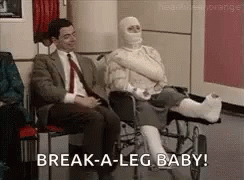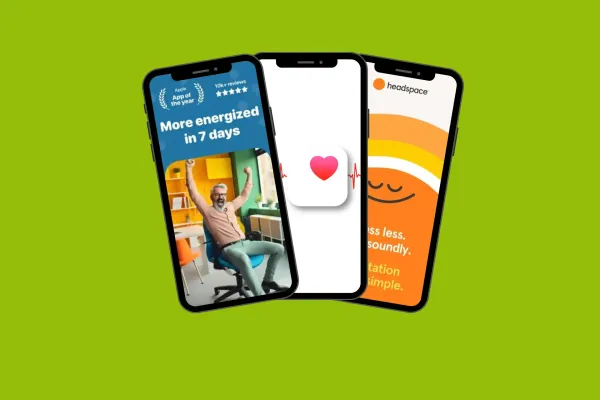We know. At this point, even the chickens are clucking the be healthy mantra.
"Stay active (cluck). Obesity rates are flying higher than Starlink satellites (cluck cluck). The sedentary lifestyle threatens everyone including your moderately active dog (she's probably not doing enough)."
The list goes on and on and the cacophony gets louder and louder. Truth be told, the data that gets swung around never seems to deviate from plunging right into the narrative. You know, the one where physical inactivity and obesity get the hand raised after the battle's hardly been fought.
Before we even started writing this piece, we took it upon ourselves to sift through the tumultuous noise. Why? We wanted to decide if the narrative holds water. Frankly, it felt like the right thing to do.
Long story short - and massive spoiler alert - it holds water in pool-sized buckets. More importantly, the mashed potato of health concerns is mainly aggregated around the syndrome you probably anticipated we'd present - Sedentary Death Syndrome.
Buckle up for a rocky ride through some nasty statistics and precious advice. If you skim all the way to the bottom, you'll be well-stacked to steer away from physical inactivity and maintain long-term health. First though...
What is Sedentary Death Syndrome (SeDS)?

Sedentary Death Syndrome (SeDS) is a grave condition that is truly sweeping the nation. Two hundred leading physiologists identified this devastating epidemic as a preventable, chronic disease that puts 60 percent of all Americans at risk. The umbrella term commonly known as the Sedentary Lifestyle – needed a vicious name. With so many suffering from physical inactivity, a serious name that rang in your ears was imperative. It needed to grab attention, becoming etched in the forefront of consciousness. Hence, the genesis of the Sedentary Death Syndrome (SeDS) terminology.
The reasons behind this spine-chilling shivery term are an array of alarming statistics. Approximately, based on the calculation done by the authors of the study published in The Lancet, about 5.3 million of people die from multiple chronic diseases tied to SeDS. Think alcohol, gun, motor vehicle, illicit drug use, and sexual behavior-related deaths – the SeDS rate dwarfs all those combined. Given these alarming numbers, many researchers are calling SeDS, and therefore physical inactivity, the major public health burden known to man.

Table of Contents
- What is Sedentary Death Syndrome?
- Who's suffering from SeDS?
- #1 Health & Wellbeing
- #2 Offspring
- #3 Healthcare system
- List of SeDS-related chronic risks
- #1 Type 2 Diabetes
- #2 Obesity
- #3 Bone Fractures
- #4 Poor performance in schools
- #5 Coronary heart disease
- #6 Menopausal symptoms
- #7 Gallstone disease
- #8 Arthritis
- #9 Chronic kidney disease
- 3 Changes that keep SeDS at Bay
- #1 Starting slow
- #2 Physical activity breaks
- #3 Quitting fitness paradigm
Who's suffering from SeDS?
Before we get to the gist of the entangled riddle of sedentarism, let's first try to spell out its ramifications. Never mind the obvious aftermath and the fact that it's causing multiple chronic diseases and obesity. In the case of SeDS, there are wheels within wheels...it's not only OUR ability to maintain long-term health that suffers. In fact, it's not even just health. This large-scale malfunction hinders a very complex cogwheel and most of us are not doing the regular checkups.
Imagine living in a 4-story building and there's an annoying leak in your plumbing. If the problem drags on for too long, you're not the only one left with a problem. Your family, neighbors, balance sheet, and even nervous plumbers are in over their heads. Kids and spouses get antsy-pantsy, neighbors get a leak too, and you keep on paying for a fix that just asks for more... The moral of the story? The SeDS is as painfully stubborn. What's worse, the issue strikes way beyond your petite 4-story building and is causing multiple chronic diseases and public health aches.
Here are three indirect implications.

#1 52 in every 1000 people got chronically diseased
Before we rush to conclude obesity or Type 2 Diabetes (T2D) is a direct consequence of SeDS, we'll first state an important remark. We need to in order to avoid potentially misleading interpretations. The buggers - SeDS and, say, obesity - are not necessarily in a causal relationship. Before we point fingers at physical inactivity as the culprit for love handles, chronic aches, and flailing blood sugar, let's keep in mind that correlation is not necessarily causation. Physical inactivity doesn't necessarily mean you're guaranteed to pack on the extra pounds and vice versa.
However, SeDS and many chronic diseases we list below, are often spotted hanging out together. As the sedentary lifestyle is mountaineering in numbers, chronic pains like cardiovascular disease and diabetes do too. The new NIH study finds that the incidence of new chronic pain has reached as much as 52 cases in every 1000 people in the US.
Physical inactivity increases your chances of residing on the gloomy side of the charts. A sedentary lifestyle is like fertile soil where all types of other chronic diseases flourish. In fact, it's one of the dark forces behind our society's awkward stamina.
#2 Our unassuming offspring suffers
By indulging in sloth or addictive behavior, our youngsters can't help but soak in our behavior. According to WHO, 60 to 85% of the global population - both developing and developed countries - lead a sedentary lifestyle. And frankly, the young ones are walking the well-paved way! So, it's no surprise that our SeDS, chronic diseases, and obesity rates have nearly doubled since the 1980s.
There's another kicker. Not only is there a learned aspect to all of this, but there's also a genetic link. If your parents have a history of physical inactivity, you might as well be more vulnerable to developing the same patterns. Especially to becoming addicted to substances like alcohol, tobacco, and drugs. So, changing our relationship to sedentary hazards means we're also handing out a better deck of cards to our offspring.
#3 Healthcare and human services get stuck
According to the Centers for Disease Control and Prevention, 1 in 5 children are obese, and 1 in 3 adults struggle too. This omnipresent physical inactivity issue is a major public health burden to the U.S. healthcare system, costing roughly $150 billion a year. And frankly, that's just a direct issue of obesity (wheels within wheels, remember?). What about other associated chronic diseases that could have been prevented with just a pinch of physical activity? Musculoskeletal injuries, cardiovascular issues, cancers, and even depression and hypertension.
Imagine how much easier it would be on our healthcare system if we focused on prevention rather than reaction. Starting with our closest environment, we could lift the weight off the healthcare system by making smarter lifestyle choices. And who knows? A change in a single lifestyle could lead to improved public health efforts - more research funding, better ability to treat other chronic diseases, swifter reaction to pandemics, etc.
SeDS Kingpin and The Gang Members

Before you plunge into the data below, please be cautioned that these numbers don't look all too great. Our goal is not to poke you with negativity. Quite the contrary, Wakeout is the epitome of fun and play! However, and this does come with a well-considered however...
The gloomy reality is at its nasty peak and it is the reason Wakeout exists.
Yes. We've become a passive society; health-wise we are in peril; the future ahead of us brings along many risks for developing chronic diseases... But new ways of untangling immobile knots are emerging and Wakeout happens to be one of the frontrunners. If your stomach gets easily upset, feel free to skip straight to the way to fend off a sedentary mob.
#1 Type 2 Diabetes
It's crazy to think that something so preventable could affect 1 in 10 Americans (37 million). But it does. It's a SeDS condition since it can be completely prevented with physical activity. The study done with physically active subjects confirm this. We're guilty of more than a few Netflix binges and appealing to our sweet tooth more often than not. Hence 11.3% of the US population suffers from T2D.
The key here - worth repeating of course - is to support physical activity. Our bodies are like cars, they need to be driven around to keep everything running smoothly. And just like a car, if you let it sit for too long, it's not going to start very well. The same goes for our bodies. If we don't get moving, the insulin-regulated glucose transporter (aka GLUT4) gets lazy and stops doing its job effectively.
#2 Obesity
Are you sitting down? Well, you might want to stand up for this news: about 500 million adults worldwide are obese. That's like if every person living in the United States, Mexico, and Canada combined decided to pack on extra pounds. And the rates just keep climbing. When you think about it, it's kind of mind-boggling that we live in a world where both obesity and underweight coexist, even within the same households. In fact, with the rise in obesity, the underweightness doesn't seem to dwindle down. It's like the health gods got together and said, "Here, have a double whammy of contradictory health issues – you'll love it."
Physical inactivity, according to a recent study published in Scientific Reports, wreaks havoc and is strongly linked to a sedentary lifestyle. In fact, a lack of will to bounce and hop around daily was found to spike obesity-related anguish. The signs are obvious – it's the right hand of a sedentary kingpin and another driver of developing chronic diseases.
#3 A Robe-tangled Fracture

First, yes, we're wishing all of us good luck in the modern conundrum. Second, to slap you with another paradox, cuddling with your chair's leathery fur for way too long increases the chances of actually breaking a leg. Yes, in a bone-snapping, robe-tangled, unfortunate kind of way.
If you're thinking why me when the risk of falling has been mitigated... well, your bones, it seems, become weaker from the lack of physical grit. Seems like the sneaky modern-day drudgery is far worse.
As reported by New York Times, a new Swedish study points out that physical inactivity leads to a higher chance of experiencing bone fractures, especially hip fractures, at times when they can't help but move. On the opposite end of (anti)sedentary behavior, the physically active individuals dialed emergency numbers way less often.
#4 Poor motor skills lead to bad grades in school?
Parents, read attentively and carefully!
In the study published in the Proceedings of the National Academy of Sciences, led by a Finish researcher Marko T Kantomaa, the mediator we never wanted - physical inactivity - but still got, was found to play a sneakily detrimental role in youth development.
To be exact, researchers found that signs of poor motor function in early childhood, mediated by physical neglect ever since may set a child on a developmental downward spiral. Yes, problems tying a shoelace or not catching up with basic physical moves - accompanied by relentless video gaming and lack of high-school physical education - is no good for your kid. This slope eventually - so the researchers claim - catches up to uncloak itself in the form of poor grades and academic underachievement, or worst case, a premature death.
#5 Coronary heart disease

The numbers don't lie - men are more likely to develop heart disease or experience a heart attack than women. If we don't overhear the news saying it, we're likely to read about it.
However - and you probably saw this from an international flight distance - women suffer from cardiovascular disease too. What you might have missed coming is that coronary heart disease is unfortunately the number 1 cause of death in women in the US. According to the National heart, lung, and blood institute, 80% of the women between the ages of 40 to 60 have one or more risk factors for developing heart disease.
The most common risk factors for the gentle and even gentler sex are: smoking, high blood pressure, excess weight, and, of course, physical inactivity. A study in 2014 found that for women in their 70s, maintaining physical activity is significantly more important than keeping any other risk factor under control. At least it is if they want to fend off congestive heart failure.
#6 Menopausal symptoms
Speaking of gentle... Ladies, kicking the portents of menopause to the curb may start with simple steps - lacing up walking shoes or rolling out the yoga mats. Yup, seems that getting physical can help reduce some of the pesky symptoms that come with this stage of womanhood.
In this study, the team of researchers gathered 164 women and split them into three groups: walkers, yogis, and couch muffins. After four months, the women who decided to take on the individualized exercise prescription in form of walking and yoga programs reported fewer menopause-related issues and an upswing in quality of life. And, if that's not enough to get you up and moving, the researchers also found that the yoga group had some extra pluses in the sexual department 😉.
#7 Gallstone disease
Physical inactivity keeps us from looking and behaving our best, and you knew that. Well, slothing away our days also causes our bladder to communicate dislike. The way it does that is by forming rocks like a good old handicraftsman. It knows no better...
To reverse going back to the stone age, physical activity may just be your secret weapon against gallstone disease. That's right, not only does physical activity keep us feeling and looking our best, but it may also help to prevent painful gallstones from forming. Moreover, another study found out that getting aerobic exercise can be good for your biliary tract - this includes the avoidance of gallstones, the shrinkage of gallstone-related symptoms and complications, as well as a lower rate of hospitalization. (yeah, we looked that up too).
#8 Arthritis
Ducking the arthritis curveball, or at least netting it with a soft touch, comes down to avoiding the helluva loop. That's the one that slowly nails 1 in 3 people further down into a stump. The loop is simple - what was likely a very sedentary lifestyle, contributed to a form of arthritis. Pain then caused you to move less, because, of course, it hurts. This decrease in already lowly movement puts you on a vicious spiral for a feeble aftermath. As you move less, the pain gets worse; the joints are at risk of becoming flimsy; the joint-supporting muscles atrophy; and your overall state of mind and body dwindles.
By finding a way to goad your personal physical activity renaissance by managing bearable pain levels and circumventing aches, your aches and pains are sure to diminish. In time you'll find that arthritis holds a looser grip over your daily whereabouts.
#9 Chronic kidney disease
No worries, folks. Just another reason to avoid numbing our butts in chairs for too long.
The researchers from American Society of Nephrology found out that for every extra 80 minutes we spend in physical inactivity increases our risk of chronic kidney disease by a whopping 20%. If this doesn't get you to stroll around more, maybe the fact that 37 million people in the US have chronic kidney disease will. The risk is real and the chances of suffering are greater with every minute you spend seated.
3 Sustainable Changes That Keep SeDS at Bay

Speaking of changes, or should we say lack thereof, we're sort of hardwired to be afraid or stupefied in trying to make one. Our biological and psychological mumbo-jumbo plots and schemes to keep us fixated on the way we do things. To change is hard and hard won't unsedentarise your seated bum. That's why a sudden shift we get sold into - like taking a 180° turn in one fell swoop - feels far more appealing than it is actually rewarding.
Speaking of rewarding, but not focusing on expectations, here are four things that are sure to bring everlasting change (and increase your physical activity levels).
#1 Starting from a reasonable place 🐌
Instead of those bumpy shifts, we suggest planting a seed and watching it grow into something sustainable. You know the saying - slow and steady wins the race! And the best part? A steady increase in physical activity will make you feel rejuvenated along the way. It'll trigger many positive feedback mechanisms as the wind at your back. All in all, you should go snail-style and finally ditch the rabbit approach.

One month of rigorous, unsustainable individualized exercise prescriptions for most people won't reverse the years of effortless body neglect. That's just the reality.
So, one meal at a time; one less spoonful of sugar in your coffee; one healthy snack instead of a cursed one; one physical activity break at work instead of a gruesome workout. You get the idea. Instead of counting calories like a digitized fitness humanoid, you could count the reasons why you're loving the renewal of a less demanding, joyful process.
We promise, snail-style without quick ROI, and you'll be shocked at how far you've come without even noticing. Plus, you'll be loving your days just as much as a toddler loves its sensitive chest raisins.
#2 Balancing screen time and playtime, at once
We've stated this fact on our blog probably a million times. So on our path to a billion... The biggest itch in a sedentary lifestyle and physical inactivity is your - drums please - excessive sitting. Alongside the bad posture...
Yup. Plugging yourself into a chair for 8-10 hours a day - by the way a norm in the US - makes you sedentary. Doing this ever since you first got hired way back in the day is what makes up a sedentary lifestyle. With your colleague, neighbors, relatives, and even some distant Vietnamese freelance warrior living da' seated life, we're in for a global health crisis. It's obvious. You need physical activity at times of the day when you're most inactive.
To strike a balance on the techno-sedentary beast, chunking down your prolonged work into manageable intervals goes a long way. And those axed breaks in work, that's where the physical activity could edge in. What starts with a coagulated body thinking we're giving it weird, mixed signals will end up in more jubilant and excited physically active individuals. Just look at the perks your spirit is about to get splashed with thanks to physical activity at work:
- Reversed sedentary hazards
- More creativity at work
- Far more energy for life-related stuff
- Relief in chronic aches and pains
- Absence of notorious afternoon slump
- Less burnout and work-related fatigue
- Better relationships with coworkers and all humans
#3 Burst Through the Fitness Paradigm

In the world-renown movie American Psycho, based on the 1991 novel by Bret Easton Ellis, the overlooked scene where Patrick Bateman (the psycho) spits back a momentous reply is quite indicative of this paradigm. Upon being complimented for great looks and fit appearance, the smirk on his face gives way to the words:
"You can always be thinner, look better."
Living in an era of great extremes and even greater pressure to bridge the far-stretched gap - from one extreme to another - we buy into the imposed agenda. The one that says we need to take radical individualized exercise prescription to bellyflop to the other side. You know, the "good side." Where chicks and fellas look like they've been shaken off the magazine covers. Where those who show us the stairway to heaven know you only get to open the door. The truth is, the doors have legs and they march just outside of your reach each time you try to grab a handle. Again...
"You can always be thinner, look better."
The words imply the better version is just outside our reach, right? The question that begs to be asked is: is chasing the ideals even a game we can win?
For more than a country-full of people globally, this paradigm is the reason they end up flirting with misery. Just like greyhounds, we try to chase the mechanical hare and end up feeling like dog poo-poo for the lack of an ideal outcome. It's an agenda that thrives on promises. It makes you shell out every last penny on the best food, supplements, equipment, program, hack, and infinite reasons... Just to get a glimpse of the other side...
Living an active and healthy lifestyle - and avoiding SeDS - means ditching the dreary fitness paradigm. It means to live for the here and now. To trade one detrimental habit for a healthy one. To support physical activity not for the mere sake of body-evident results, of course, but for the appreciation of your existence in this world. For an ungranted day in front. For the opportunity to wake up and feel a bit more of jolliness sprinkled over your daily whereabouts.
To break on through to the active side doesn't mean getting a gym membership or buying a life-altering program. It just means being ready for a mind-bogglingly simple tradeoff and a heck of a joyful process.









